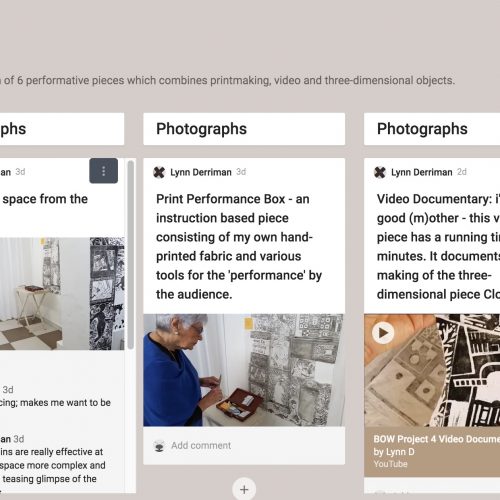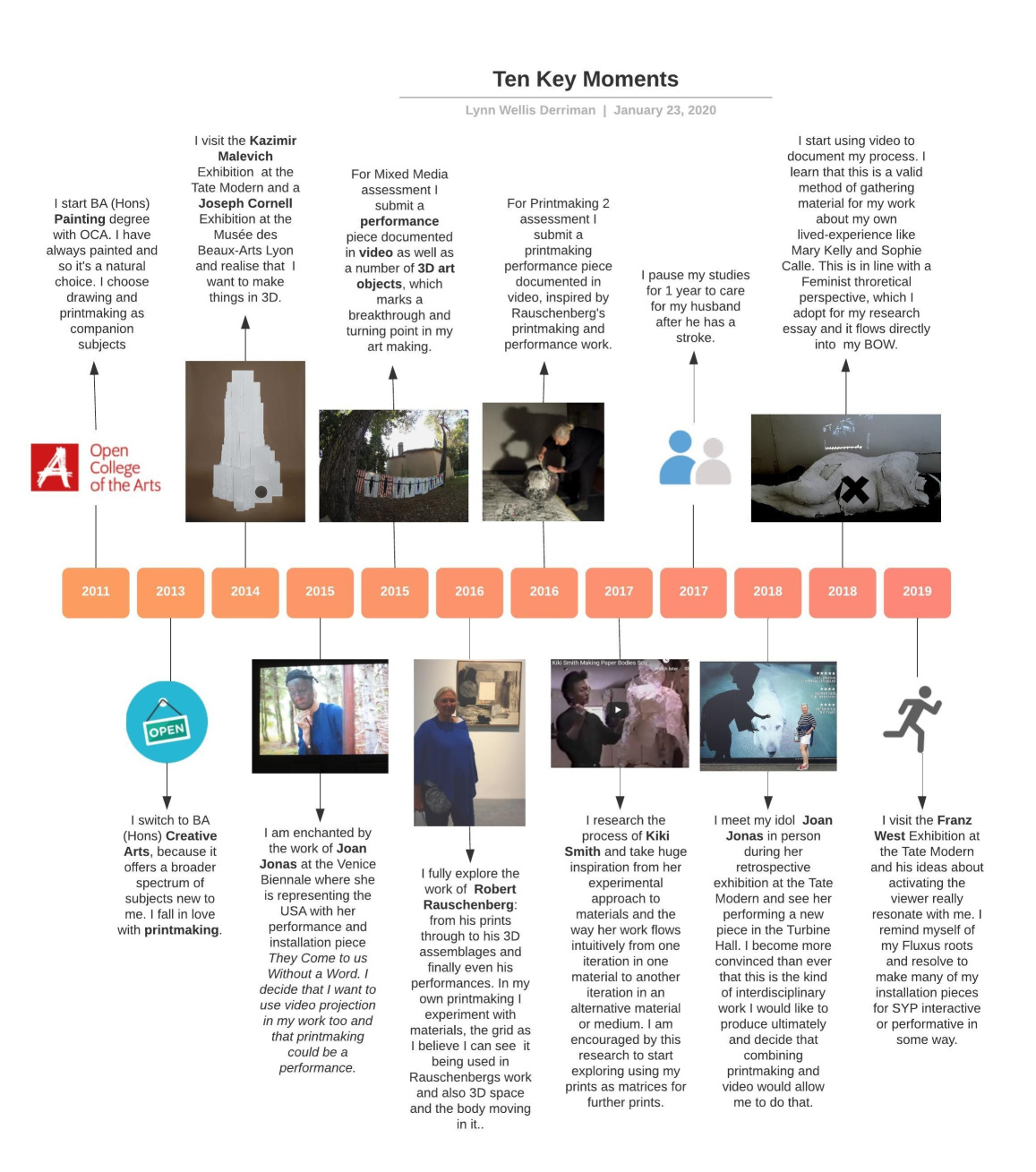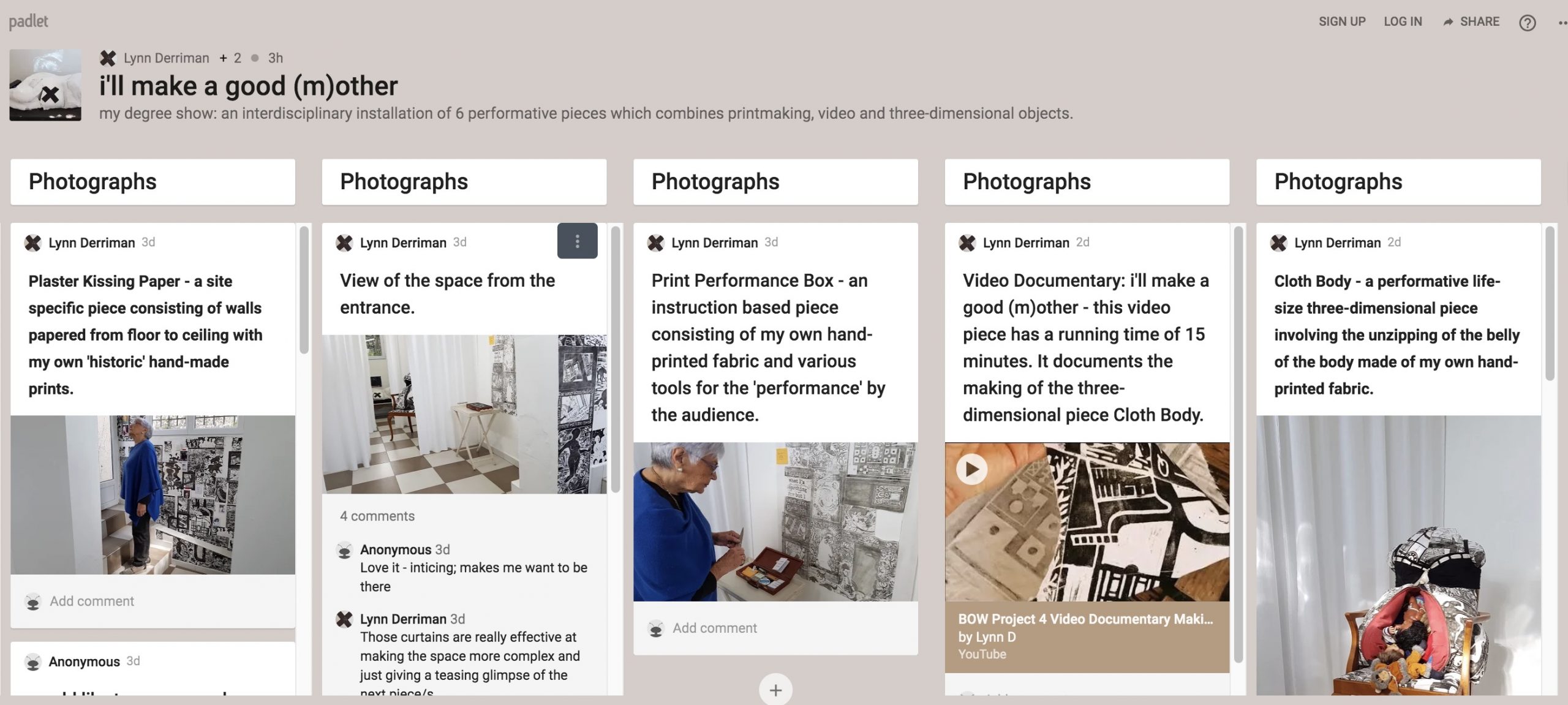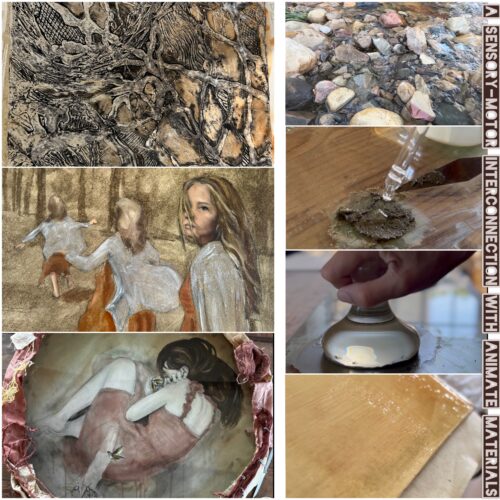
Student stories: Lynn Derriman.
Ten Key Moments in the journey of a Creative Arts student
I am currently tutoring Lynn in the final unit of her Creative Arts degree, ‘Sustaining Your Practice’ (SYP). I asked Lynn if she would contribute to this blog post, to have a conversation around her creative journey, to share with you.

Doug: Hi Lynn, I have been lucky enough to tutor you on Printmaking and now SYP, and I’ve watched your progress as I’m the programme leader for Creative Arts. You have been studying with us for nearly ten years, allowing your practice and learning to evolve as a very active slow-creative journey. Do you think this has been a benefit to you and if so, how and why?
Lynn: Hi Doug, your choice of words, ‘active slow-creative journey’, really resonates. I feel that there is a direct link between the length of time I have been allowed to engage with this learning experience to its fullest extent at my own pace and how much of that acquired knowledge I’ve durably assimilated and integrated into my own creative practice. I have been able to sit with coursework problems when they arose and take the time to really chew them over, while I dug for the contextual research or museum visit that would inevitably provide me with my Eureka moment when I was finally ready to recognise it. This slow approach to learning has paid off in the long term, with that ‘distilled’ knowledge manifesting in my work in a spontaneous and personal way in the form of my own visual language and a deeper understanding of my creative process.
Doug: You mention how taking time has enabled you to overcome coursework problems and acquiring knowledge is a part of this. Could you say a bit more about the strategies you employ in your home studio practice to help you define your creative language?
Lynn: I dislike rupture, so one thing I always do is build a bridge between new and old research and creative output and add onto what I already know, which gives me continuity of thought and direction. I also find it essential to make lists and keep re-stating and reminding myself of what I hope to achieve in a current or future single project or entire body of work. These lists state my principles and aims in terms of medium, scale, materials, tools, techniques and general approach. I think this has led to my visual ‘vocabulary’ being additive, cohesive and recognisable.
Doug: In your ten key points, you mention being influenced by Kiki Smith and Joan Jonas; both have an ambitious and expansive approach to their practice. How have you managed a sense of large-scale and ambition for your making at a distance, how has your learning helped you achieve your ambitions?
Lynn: I’m glad that you have singled out Kiki Smith and Joan Jonas, because more than any other artists I’ve researched, they have fed my dreams and ambitions to increase the scale and affective potential of my own work. They provided the inspiration, but OCA facilitated my upsizing by allowing me to submit my large three-dimensional outcomes in digital format and once I knew that I could do that, I decided to take full advantage and go for bust! My most recent project is a site-specific piece in which I have combined architectural surfaces with my own prints papering entire walls floor to ceiling. The ‘marriage’ of the two mediums completely transforms the nature of the space and consequently also the visitor’s experience of it (Lavin, 2011).
Doug: It’s exciting to hear about your ambitious practice, encompassing printmaking, audio, video and three-dimensional forms with a depth of context that reaches out into the world. Could you tell me a bit about how you have managed the interdisciplinary nature of your creative arts degree, and its impact on your forthcoming degree show “I’ll make a good (m)other”?
Lynn: When I switched from the painting to creative arts pathway, it was because I saw the opportunity to try out as many new disciplines as I possibly could. I have a relaxed approach to learning new skills, which is to experiment and work instinctively, not worrying too much about outcomes. So, each of the six pieces that form the body of work for my show grew quite spontaneously out of the piece that preceded it. The initial idea suggested one medium and the subsequent ideas each suggested a complementary medium. I simply followed where the pieces themselves took me as they developed. To me the impact this approach has had on my degree show is that the body of work being presented feels intentional, homogenous and coherently interdisciplinary.
Doug: Thank you, Lynn, your thoughts have given us a real insight into your studies and creative practice. As a quick final thought, what would be the one piece of guidance that you would pass onto creative arts students setting out at the start of their degree?
Lynn: Be brave and tell your own ordinary or extra-ordinary story, in your own way, through your work, reflecting on and documenting every step of that process.
You can see Lynn’s Degree show presentation as part of her work on SYP on her Padlet here: https://padlet.com/lynn507722/v4i06eo3pi4d

References:
Slow-creativity – An academic approach that allows for time and reflection to foster the development of creative work. See: https://juice-journal.com/2018/10/24/distance-learning-in-creative-arts-education-understanding-the-benefits-of-time-and-distance-in-the-delivery-of-he-at-the-open-college-of-the-arts/
Lavin, S. 2011. The First Kiss. In: Whiting, S ed. Kissing Architecture. USA: Princeton University Press, pp. 1-23
|
|







Thanks Lynn and Doug for sharing this, really fascinating work and journey— and eloquently told.